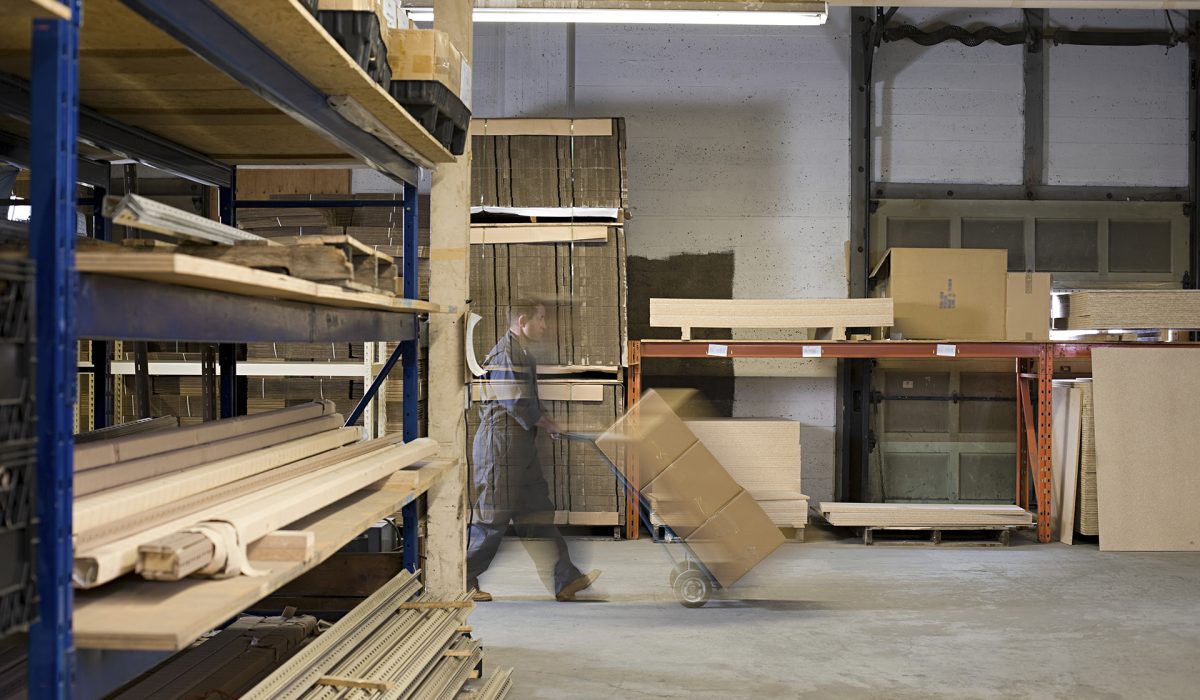
Good heating isn’t just about power. It’s also about cost efficiency – directing warmth exactly where it’s needed. Airrex diesel infrared heaters have proven in practice that consistent comfort doesn’t require high fuel consumption.
The following examples show how Airrex heaters have helped keep heating costs in large industrial spaces under control – without compromising comfort.
Proven results with infrared heating: only 2.5 litres per day
Many are surprised to learn how little fuel Airrex diesel heaters actually consume. They’re designed to heat spaces effectively and evenly, without wasting energy where it isn’t needed.
Grels Ström, a retired technical expert from Rex Nordic, uses an Airrex heater in his 480 m³ warehouse. The building has mineral wool insulation in the ceiling, plasterboard walls, and a concrete floor – a structure that stores heat efficiently. Previously, the warehouse was heated with direct electric heating, but switching to diesel brought a clear drop in both consumption and costs.
Ström explains his experience: “At first, fuel consumption can be slightly higher. It usually takes about a week or a week and a half before it stabilises. Infrared heat is absorbed directly into the structures, and once they’re fully warmed, surprisingly little fuel is needed to maintain the temperature.”
He keeps the warehouse at +15 °C when it’s around zero outside and has achieved remarkably low fuel consumption. Once the building is fully warm, daily consumption averages only about 2.5 litres of diesel. The Airrex heater has run reliably without problems and has required almost no maintenance.
A slightly higher initial consumption is normal since building materials often contain moisture that must first dry out. Once dry, the system reaches its optimal efficiency.
This is where Airrex infrared technology truly shines. The heat is stored within the structures and stays there. After that, only short heating cycles are needed to maintain a pleasant temperature day after day – and the savings show directly on the fuel bill.
Smart thermostat keeps consumption low
Every Airrex infrared heater comes with a built-in thermostat that helps minimise fuel consumption. The heater starts and stops automatically to maintain the desired temperature. Diesel is burned only when needed – and it’s metered precisely, no more than necessary, keeping consumption to a minimum.
In practice, this means the heater works independently. Once the building’s structures have warmed up, the unit maintains the temperature with short operating intervals. There’s no need for constant adjustments – the thermostat does the work for you.
Unlike traditional air-blowing heaters, Airrex units don’t push hot air to the ceiling or out the door when it’s opened. Infrared heat is directed straight into walls, floors, and machinery, which absorb and store it. As these structures retain heat, energy use remains exceptionally low. If a door is opened, the stored warmth quickly restores the indoor temperature.
Long-term savings with Airrex diesel heaters
Markku Ojanen has seen the difference first-hand. He heats a 1,080 m³ (360 m², 3 m high) insulated hall, which used to rely on radiators and fan heaters. The previous system consumed around 2,500 litres of oil per year.
After installing an Airrex AH-300 diesel heater, the improvement was immediate. In the first winter alone, annual fuel use dropped to about 1,000 litres – less than half of the previous amount.
He keeps the hall at a steady +9–10 °C, raising it to +13 °C while working. Over ten years of use, the savings have amounted to roughly €10,000–11,000, and the same heater continues to operate flawlessly.
“Maintenance has been done on time, but no repairs have ever been needed,” Ojanen says. “It just keeps going.”
Sustainable warmth you can feel
Airrex infrared heating works on a simple yet powerful principle: instead of heating air, it radiates warmth directly into surrounding surfaces. Floors, walls, and objects absorb the heat – just like sunlight warms your skin.
Once these surfaces are warm, they release heat evenly back into the air, maintaining a consistent indoor temperature. This stored warmth acts as a natural heat buffer, keeping fuel consumption low after the first weeks. The heater runs only as much as needed to maintain balance.
That’s the key difference between infrared and traditional fan heaters. Infrared heat doesn’t escape when doors open or air circulates. The stored warmth in the structures quickly restores the temperature, keeping the heat where it’s needed and the savings ongoing.
Site 1 – Warehouse
Type: Warehouse 480 m³
Structure: Concrete floor, ceiling insulation, plasterboard walls
Previous heating: Direct electric
New solution: Airrex diesel infrared heater
Maintained temperature: +15 °C in around 0 °C outdoor conditions
Average daily fuel consumption: ~2.5 L diesel
Maintenance: Reliable operation, almost no maintenance required
Savings: Significantly lower consumption than the previous system
Site 2 – Industrial hall
Type: Insulated hall 1 080 m³ (360 m², 3 m height)
Previous system: Radiators + fan heaters
Previous fuel use: ~2,500 L oil/year
New solution: Airrex AH-300 diesel heater
Current fuel use: ~1,000 L/year
Usage time: 10 years
Estimated savings over 10 years: ~€10,000–11,000
Reliability: Same heater still running flawlessly, no repairs needed
